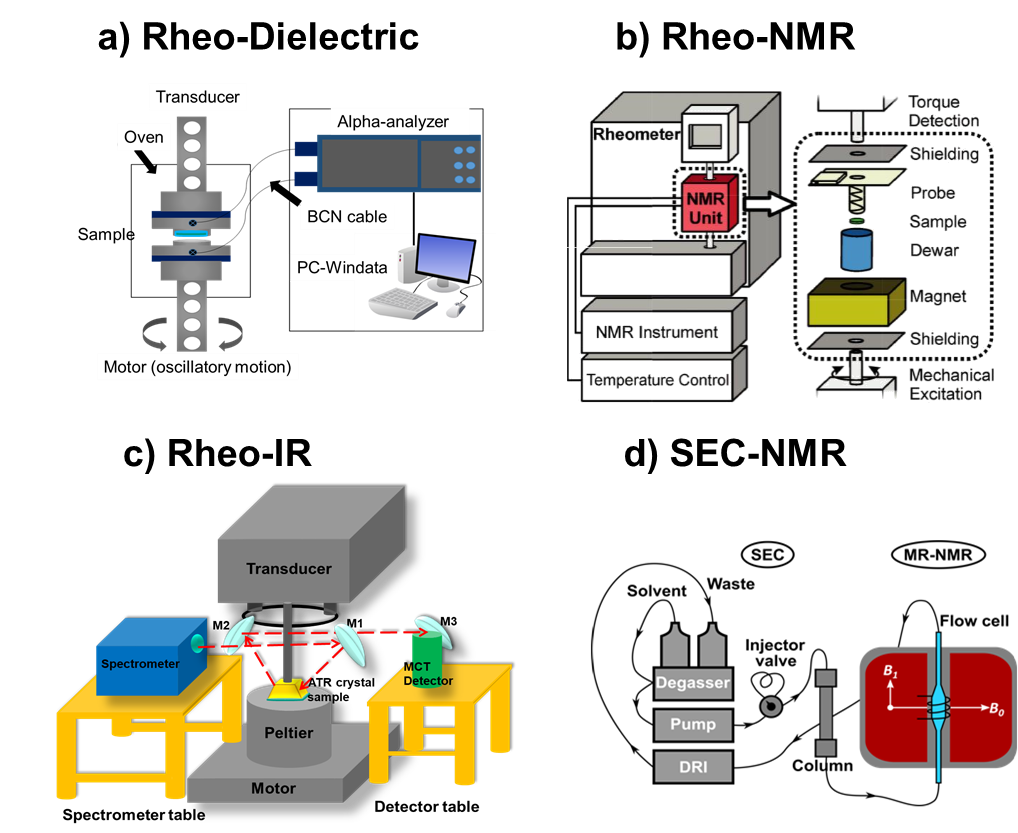20. Structure-effect relationship between superplasticizers and the properties of fresh cement pastes analyzed by novel combined rheological techniques
Principal investigator(s) – PI
- Prof. Dr. Manfred Wilhelm
Karlsruher Institut für Technologie (KIT), Institut für Technische Chemie und Polymerchemie
Researcher(s) in-charge – RI
- Dr. Christopher O. Klein
Karlsruher Institut für Technologie (KIT), Institut für Technische Chemie und Polymerchemie - Dr. Roxana Figuli
Karlsruher Institut für Technologie (KIT), Institut für Technische Chemie und Polymerchemie M.Sc. Tamara Meyer
Karlsruher Institut für Technologie (KIT), Institut für Technische Chemie und Polymerchemie
Former members
- M.Sc. Nonkululeko W. Radebe
Karlsruher Institut für Technologie (KIT), Institut für Technische Chemie und Polymerchemie
Subject Areas
Cementitious materials, Combined-Methods, Method Development, Superplasticizers
Term
2021-2024
Project identifier
Deutsche Forschungsgemeinschaft (DFG) – Grant No. WI 663 1911/25-1, Project No. 386871659
Project Description
The combination of rheological measurements with a second characterization method, is addressed in order to gain unique information about molecular dynamics, local chemical structure of time and shear dependent phenomena with regard to cement mixtures. The Rheo-NMR and Rheo-IR setups are worldwide unique and were developed within our group. The latter was implemented during the first SPP2005 funding period.
In the new funding period, we will further optimize (sensitivity, temperature variability) the Rheo-IR method. Additionally, we aim to extend our experiments to cement paste including different superplasticizers with varying concentration. We intend on studying the changes in local mobility with different plasticizers (Rheo-NMR), the change in conductivity or permittivity (Rheo-Dielectric) and the change in chemical composition with Rheo-IR. The combined methods will allow to study these changes as a function of strain or shear over time and correlate it to actual mechanical properties of cement admixtures.
Rheo-NMR: The Rheo-NMR technique is specially developed to simultaneously study the molecular dynamics via NMR and the corresponding mechanical response via rheometry for fresh cement mixtures. While rheology is a macroscopic method (spatial resolution in mm-range), at time scales of about 10-3 to 102 Hz, NMR is a local method (spatial range 1-3 nm) observing molecular dynamics specifically on protons in the range of 1 Hz-100 kHz. 1H-NMR is the most effective non-destructive and non-invasive technique that has been used to undertake NMR magnetization relaxation time (T1, T2 T1ρ) studies of hydrating cement-based materials. The combination allows to correlate the molecular dynamics with the mechanical properties. Providing adequate moisture content in cement-based materials is important during hydration of the cement paste to ensure proper development of their mechanical and durability properties. In the 2nd funding period, we want to apply Rheo-NMR to quantify changes in the mobility, especially of the different types of water, as a function of the used superplasticizer and its concentration.
Rheo-dielectric: Local information – time domain: 10-3-107 Hz. The combination of rheological and dielectric properties can give detailed information about the relation between local molecular dipolar relaxation dynamics and macroscopic response to mechanical forces. Therefore, the influence of different superplasticizers on conductivity and permittivity of cement admixtures is of high interest.
Rheo-IR: This method has been newly developed within the SPP 2005 project and is implemented to study the chemistry and chemical evolution of cement hydration. First measurements have already shown that we can also see the formation of hydrate phases in the first minutes of hydration. In the new funding period, we will further optimize the S/N ratio of this new combined technique and we will study the mechanisms of the interaction between individual particles or between particles and the carrier liquid with the new Rheo-IR technique for a better understanding of the rheological behavior of fresh cement and superplasticizer mixture, under varying conditions, e.g. temperature, PCE dosage.
Model Systems for superplasticizers: Another new aspect is the synthesis of model plasticizers based on polycarboxylate ethers (PCE) and their characterization as polymers. With these experiments we intend to gain insights into the influence of composition and topology on the resulting properties in the cement admixtures, especially the mechanisms of agglomeration and dispersion will be addressed.

Schematic illustrations of the a) combined ARES rheometer and dielectric analyzer (Rheo-Dielectric) for determining the raw stress data and the dielectric spectra in-situ b) 20 MHz NMR Halbach magnet with magnetic shielding set in an ARES rheometer for Rheo-NMR c) newly developed Rheo-IR setup directly correlating rheology with molecular structure and d) 1H-NMR spectrometer coupled to an SEC instrument, where the NMR acts as an on-line chemical sensitive detector used for unique structural information related to superplasticizers
Publications
in: V. Mechtcherine, K. H. Khayat, E. Secrieru (Eds.), Rheology and Processing of Construction Materials, pp. 256–265 (2019)
in: W. Boshoff, R. Combrinck, V. Mechtcherine, M. Wyrzykowski (Eds.), 3rd International Conference on the Application of Superabsorbent Polymers (SAP) and Other New Admixtures Towards Smart Concrete. SAP 2019, pp. 192-199
Materials and Structures 53 (2020)
Journal of Rheology 65 (2021)
